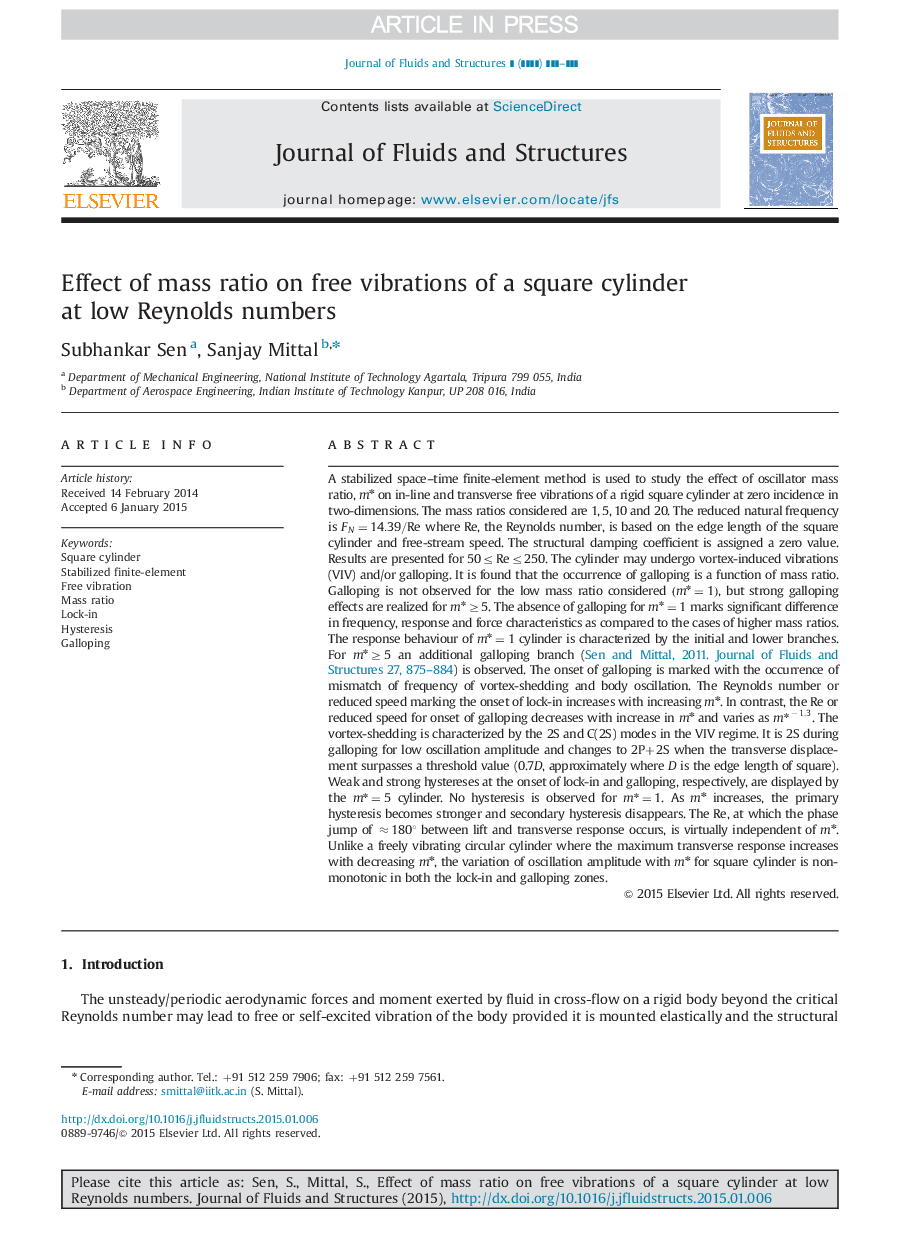| کد مقاله | کد نشریه | سال انتشار | مقاله انگلیسی | نسخه تمام متن |
|---|---|---|---|---|
| 7175989 | 1466593 | 2015 | 18 صفحه PDF | دانلود رایگان |
عنوان انگلیسی مقاله ISI
Effect of mass ratio on free vibrations of a square cylinder at low Reynolds numbers
ترجمه فارسی عنوان
اثر نسبت جرم به ارتعاش آزاد یک سیلندر مربعی در اعداد رینولدز کم
دانلود مقاله + سفارش ترجمه
دانلود مقاله ISI انگلیسی
رایگان برای ایرانیان
کلمات کلیدی
سیلندر مربعی تثبیت عنصر محدود ارتعاش آزاد، نسبت جرم، قفل در هیسترزیس، گول زدن،
موضوعات مرتبط
مهندسی و علوم پایه
سایر رشته های مهندسی
مهندسی مکانیک
چکیده انگلیسی
A stabilized space-time finite-element method is used to study the effect of oscillator mass ratio, mâ on in-line and transverse free vibrations of a rigid square cylinder at zero incidence in two-dimensions. The mass ratios considered are 1, 5, 10 and 20. The reduced natural frequency is FN=14.39/Re where Re, the Reynolds number, is based on the edge length of the square cylinder and free-stream speed. The structural damping coefficient is assigned a zero value. Results are presented for 50â¤Reâ¤250. The cylinder may undergo vortex-induced vibrations (VIV) and/or galloping. It is found that the occurrence of galloping is a function of mass ratio. Galloping is not observed for the low mass ratio considered (mâ=1), but strong galloping effects are realized for mââ¥5. The absence of galloping for mâ=1 marks significant difference in frequency, response and force characteristics as compared to the cases of higher mass ratios. The response behaviour of mâ=1 cylinder is characterized by the initial and lower branches. For mââ¥5 an additional galloping branch (Sen and Mittal, 2011. Journal of Fluids and Structures 27, 875-884) is observed. The onset of galloping is marked with the occurrence of mismatch of frequency of vortex-shedding and body oscillation. The Reynolds number or reduced speed marking the onset of lock-in increases with increasing mâ. In contrast, the Re or reduced speed for onset of galloping decreases with increase in mâ and varies as mââ1.3. The vortex-shedding is characterized by the 2S and C(2S) modes in the VIV regime. It is 2S during galloping for low oscillation amplitude and changes to 2P+2S when the transverse displacement surpasses a threshold value (0.7D, approximately where D is the edge length of square). Weak and strong hystereses at the onset of lock-in and galloping, respectively, are displayed by the mâ=5 cylinder. No hysteresis is observed for mâ=1. As mâ increases, the primary hysteresis becomes stronger and secondary hysteresis disappears. The Re, at which the phase jump of â180° between lift and transverse response occurs, is virtually independent of mâ. Unlike a freely vibrating circular cylinder where the maximum transverse response increases with decreasing mâ, the variation of oscillation amplitude with mâ for square cylinder is non-monotonic in both the lock-in and galloping zones.
ناشر
Database: Elsevier - ScienceDirect (ساینس دایرکت)
Journal: Journal of Fluids and Structures - Volume 54, April 2015, Pages 661-678
Journal: Journal of Fluids and Structures - Volume 54, April 2015, Pages 661-678
نویسندگان
Subhankar Sen, Sanjay Mittal,
